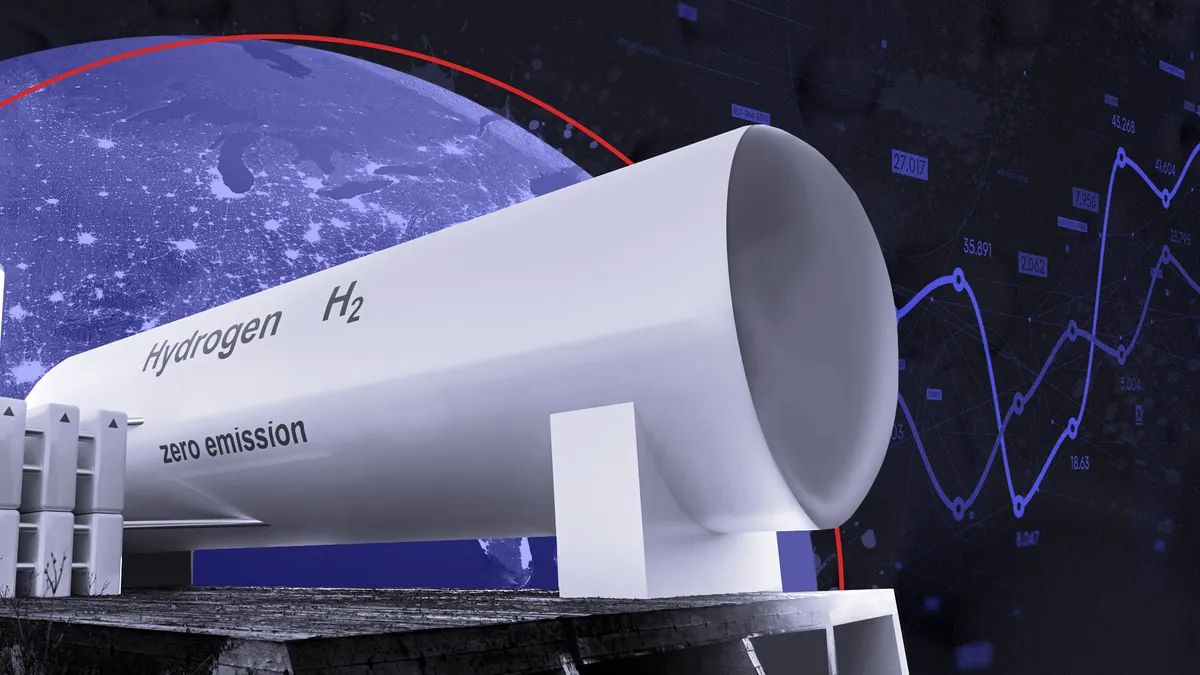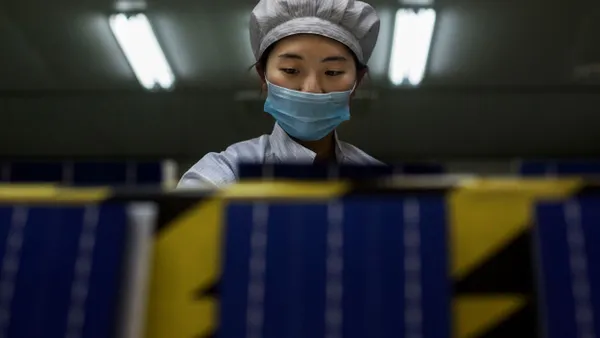Dive Brief:
- The technology needed to achieve a global hydrogen economy already exists or will become available shortly, experts told attendees of the inaugural Low-Carbon Hydrogen Conference by Wood Mackenzie last week. But in North America, questions around policy have created uncertainty within the hydrogen industry.
- While the introduction of more than $8 billion in potential hydrogen funding through the infrastructure bill has spurred interest in the resource, uncertainty persists with respect to a proposed hydrogen production tax credit, according to Peter Findlay, say Wood Mackenzie principal analyst with a focus on carbon capture technologies.
- Debates about which kinds of hydrogen deserve more support have become almost comical, Findlay said, while a proposed increase in the tax credit for carbon capture seems likely to pass in the next year or two if the Republicans are able to take the U.S. House and Senate.
Dive Insight:
Is the future of American hydrogen green? Barring a sudden change in the political climate, probably not, a panel at last week’s Low-Carbon Hydrogen Conference concluded.
So-called green hydrogen, which is produced by using renewable energy to derive hydrogen from water, is generally the ideal that comes to mind when discussions of a decarbonized, hydrogen-based economy arise.
But today’s hydrogen is generally extracted from natural gas using a process called steam methane reforming. And with support for political support for carbon capture growing faster than interest in green hydrogen, blue hydrogen — which pairs steam methane reforming with carbon capture — appears set to become the energy technology of the future, at least in North America.
“That’s where it looks like North America will be more of a leader,” Findlay said during the conference last Thursday.
As of last month, Scotland-based engineering consultant Wood has begun to publicly roll out a new technology that combines precombustion carbon capture with steam methane reforming to produce blue hydrogen that is 95% carbon-free, Wood business development manager Stephen McColl told attendees of the conference. This technology, he said, is both more flexible than most other options on the market, and can reduce both capital and operating costs for hydrogen producers by 10-20%, depending on the configuration of the plant.
“We’ll call it a re-imagined version of [steam methane reforming]," McColl said. “Blue hydrogen is our response to the market’s need, the world’s need, for lower-CO2 hydrogen.”
The "funny" thing about this technology and the current policy landscape, Findlay said, is that a proposed production tax credit that is intended to support green hydrogen uses the 95% carbon-free mark as the line delineating what qualifies as “green” hydrogen.
“Assuming something like that comes to the fore again,” Findlay said, “it was almost comically trying to dissuade against blue hydrogen. In some of those projects you’d have a billion or two billion calculation to see if you got to that 95.1%. It’s a funny challenge that would have to get ironed out.”
While the creation of a hydrogen production tax credit has become mired in debates around what deserves government support and what does not, a proposal to increase the value of tax credits for carbon capture and sequestration has bipartisan support, making it look as though blue hydrogen will become the de facto technology of choice in the U.S. and likely Canada as well, Findlay said.
Getting beyond 95% emissions reductions is possible, McColl said, but the cost is far greater.
“There’s got to be some balance and regulatory support to push those boundaries and keep that development going,” he said.
Beyond funding, hydrogen infrastructure projects will also need additional support to work through the permitting process given the scope of the ambition involved, according to Armando Infanzon, director of business development for Southern California Gas Company. The U.S. should optimize anything it can “upfront, as soon as possible, because the market is demanding these clean fuels," he said on the panel.














